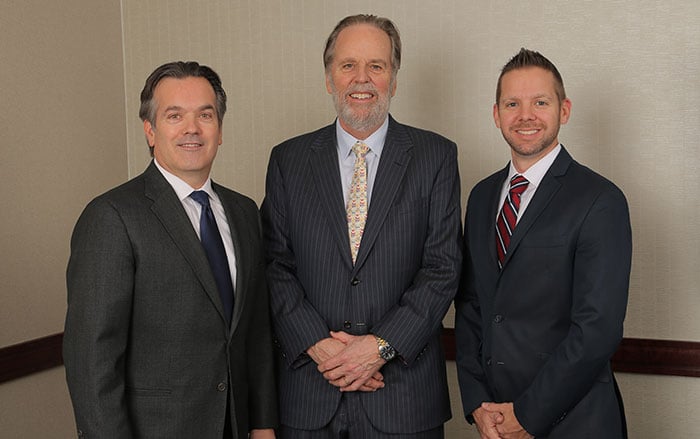In 2018, Governor Eric Holcomb signed Senate Bill 1 into law. This bill reversed a ban on the sale of liquor on Sunday that began with the state’s founding in 1816. Now, consumers can buy alcohol at liquor, grocery, drug, and convenience stores from the hours of noon to 8 p.m. on Sundays.
Most Hoosiers rejoiced at this news. After all, not being able to buy beer, wine, or a bottle of hard liquor on Sunday was often inconvenient — especially during football season. Yet some were worried that a change in the state’s “blue laws” would lead to a surge in drunk driving.
While there is some evidence to suggest that stricter laws related to buying and consuming alcohol and driving can reduce rates of drunk driving, these studies examined policies such as limits on the number of places that can sell alcohol, sobriety checkpoints, alcohol taxes, and greater enforcement of drunk driving laws. There is no evidence that restricting sales of alcohol on a particular day of the week has an effect on drunk driving.
In Indiana, data on alcohol-related car accidents show that the opposite is true. Since the state legalized the sale of alcohol on Sundays, the number of crashes that involved a drunk driver actually went down. These numbers demonstrate that while driving under the influence continues to be a problem in Indiana, selling alcohol on Sunday hasn’t resulted in a surge of drunk driving incidents.
Why Did Indiana Prohibit Alcohol Sales on Sunday?
Indiana became a state in 1816. From the beginning, sales of alcohol on Sunday were banned — not because of concerns about riding a horse while intoxicated, but due to pressure from religious leaders. Over the coming years, the state began to impose additional restrictions on alcohol sales, such as forbidding the sale of liquor within 1 mile of a religious meeting and barring sales on Election Day and holidays.
Throughout the 1800s, a number of counties within Indiana went “dry.” Ultimately, the state went entirely dry in 1918. Indiana officially joined the Prohibition movement, ratifying the 18th amendment that banned alcohol sales throughout the United States.
By 1933, the 18th amendment was repealed. Indiana followed suit, repealing its 1925 Wright Bone Dry Law. However, it then enacted a liquor control act that strictly limited how and when alcohol could be sold and consumed. Sales of alcohol on Sundays, holidays, and Election day were still banned, and the drinking age was set at 21.
In 1973, Indiana relaxed its rules on Sunday sales, allowing restaurants, bars, hotels, and private clubs to sell alcohol by the drink. In 2015, the ban on Christmas day sales ended. Finally, on March 4, 2018, the first carryout alcohol sales were permitted at grocery, convenience, and liquor stores.
Indiana still has some unusual liquor laws on its books. For example, it is the only state that regulates the sale of alcoholic beverages based on temperature. Under current law, you can only buy cold beer at package liquor stores or breweries — not at convenience stores, grocers, or other locations where alcohol is sold.
Several of Indiana’s alcohol-related laws are directly related to the dangers associated with drinking, including drunk driving. However, the restriction on Sunday sales was never about safety, but about religious preferences at the time.
Breaking Down the Data: Drunk Driving Accidents After the Legalization of Sunday Alcohol Sales
When Sunday alcohol sales started in March 2018, some predicted that drunk driving would increase. According to crash data from the Indiana State Police, this fear has not become a reality. Throughout the state and here in Marion County, the number of alcohol-related motor vehicle accidents has actually decreased.
Overall, the number of alcohol-impaired collisions in Indiana decreased from 2016 to 2018, from a peak of 4,846 crashes in 2016 to 3,990 in 2018. From 2017 to 2018, the rate of alcohol-related traffic accidents decreased by 12.4%
More importantly, the number of accidents and injuries in Indiana on Sundays and Mondays decreased in 2018-2019. Presumably, if Sunday alcohol sales were going to affect rates of drunk driving, the impact would be biggest on Sunday and Monday, as Indiana residents could already buy alcohol every other day of the week, from 7 a.m. to 3:00 a.m. This did not occur.
Instead, the number of accidents on Sundays and Mondays actually decreased, from 2,369 in 2016-2017 to 2,006 in 2018-2019. Similarly, the number of people injured in alcohol-related crashes dropped from 2,922 to 2,220 in the same time frame. The only area that did not show improvement was fatalities related to drunk driving wrecks, which increased from 6 to 9.
The numbers for Marion County are similar, with a drop in both overall alcohol-impaired crashes (from 266 to 235) and people injured (from 832 to 556) from 2016-2017 to 2018-2019. The number of fatalities did increase over this time period, from 0 to 2. Deaths in motor vehicle accidents may be linked to other factors, such as the failure to wear a seatbelt and speeding.
These statistics do reveal an important issue in traffic accidents involving alcohol. In almost every case, the driver who caused the crash was significantly over the legal limit of .08% blood alcohol concentration (BAC). On average, the BAC of a drunk driver involved in a collision was near twice the legal limit — from 0.158% in 2016 to 0.162% in 2019. In Marion County, BAC levels were even higher, ranging from 0.168% in 2016 to 0.172% in 2019.
What Can We Learn From Alcohol-Related Accident Data?
When talking about drunk driving, it is tempting to look for simple solutions — like banning alcohol sales on Sundays. Complex problems like alcohol abuse and addiction are rarely that easy to solve. Instead, we need to look deeper to figure out what is driving the problem.
According to the National Highway Traffic Safety Administration (NHTSA), people who drive drunk make a number of individual decisions that lead to their behavior. The most common factor in drunk driving is social and environmental influences. Heavy drinking often arises in response to encouragement from friends, and without a plan in place for a designated driver or a ride.
In other situations, an individual drinks alcohol (and continues to drink) for personal reasons, such as a need to relax or even alcohol addiction. One of the main reasons that people drive under the influence is a belief that they are not too intoxicated to drive. As the statistics on BAC after alcohol-involved car accidents show, this belief is often mistaken — even when a person is more than twice the legal limit.
Drunk driving is a significant cause of accidents, injuries, and deaths in Indiana. The Centers for Disease Control and Prevention (CDC) reports that between 2003 and 2012, 2,210 people were killed in crashes involving a drunk driver in Indiana.
There are a number of steps that we can all take to reduce the incidence of drunk driving — none of which have anything to do with banning alcohol sales on Sunday. This may include:
- Identifying a designated driver for your group.
- Getting a ride home from a friend, taxi, or Uber if you have been drinking.
- Taking your friend’s keys if they try to drive after drinking.
- Offering alcohol-free beverages if you host a party with alcohol, and keeping an eye on guests who may have had too much to drink.
- Talking to your teens about the dangers of drinking and driving.
- Calling the police if you see a driver on the road who appears to be drunk.
If you are involved in an accident with a drunk driver, you may be able to file a personal injury claim to recover compensation for any injuries or losses that you have suffered.
Additional Findings From Our Research
- The average BAC of an Indiana driver in an alcohol related crash was .160 (2016-2019)
- Marion County drivers averaged .167
- The average BAC of an Indiana driver in an alcohol related crash with INJURY was .152
- Marion County drivers averaged .163
- 85% of Indiana drivers involved in alcohol related crashes blew over the legal limit
- 88% for Marion County Drivers
- Indiana alcohol related crashes have decreased over 18% since Sunday alcohol sales have started.
- Marion county alcohol related crashes have decreased over 23%
Hurt in a Drunk Driving Accident? We’re Here to Help.
After a traffic crash, you may be overwhelmed, and too stressed to even consider the next steps. An Indianapolis car accident attorney can take on the insurance company for you, advocating for your right to full compensation for your injuries.
With more than 50 years of combined experience, the attorneys of Doehrman Buba Ring are well-equipped to help injury victims throughout Indiana. We offer free initial consultations and handle all cases on a contingency fee basis, which means that we don’t get paid unless you do. To learn more or to schedule an appointment with a member of our team, contact us today at 317-669-9445 or email us.


